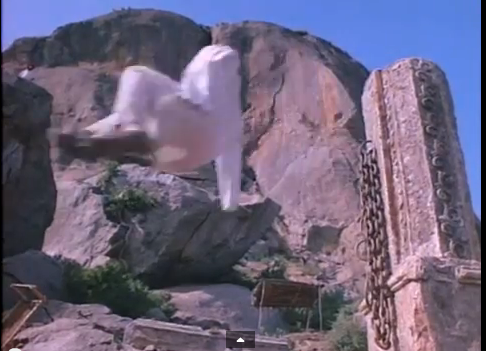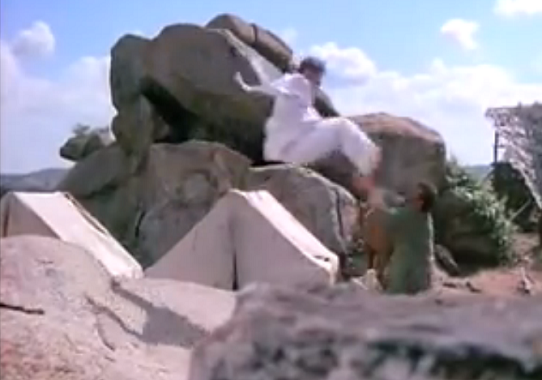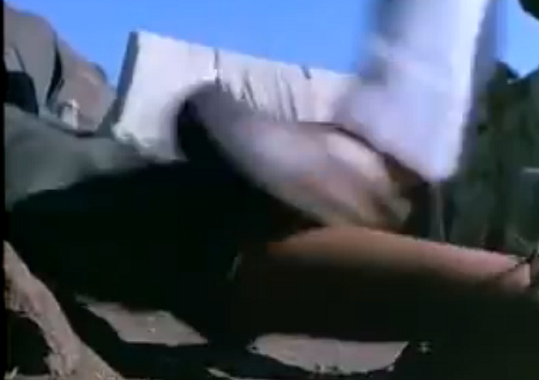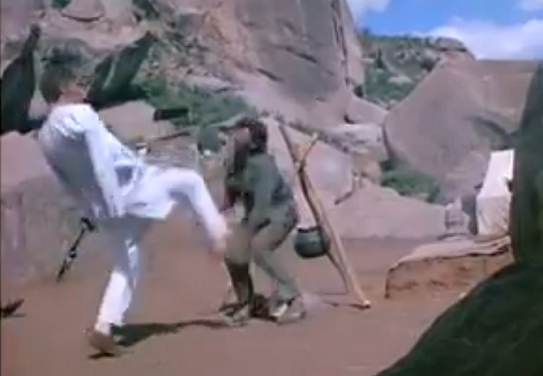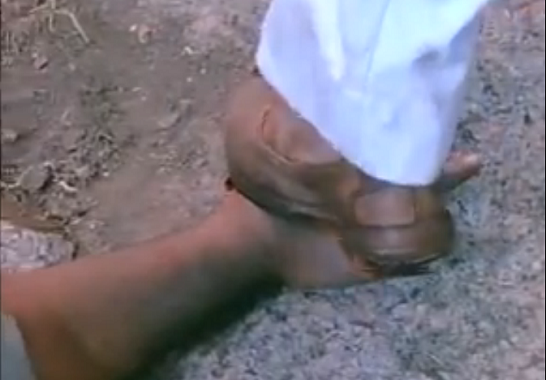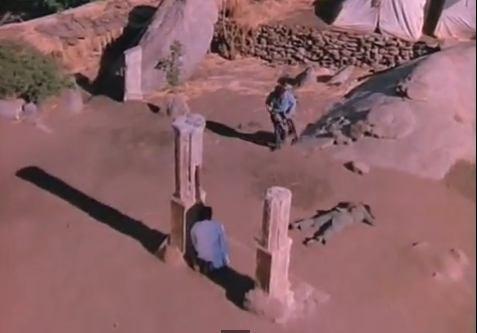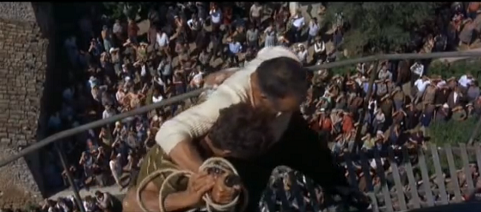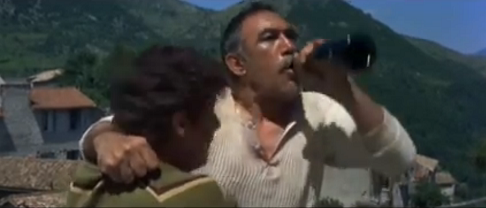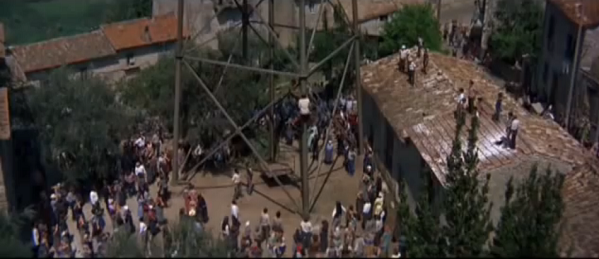Sholay
Contents |
Censored/ deleted sequences
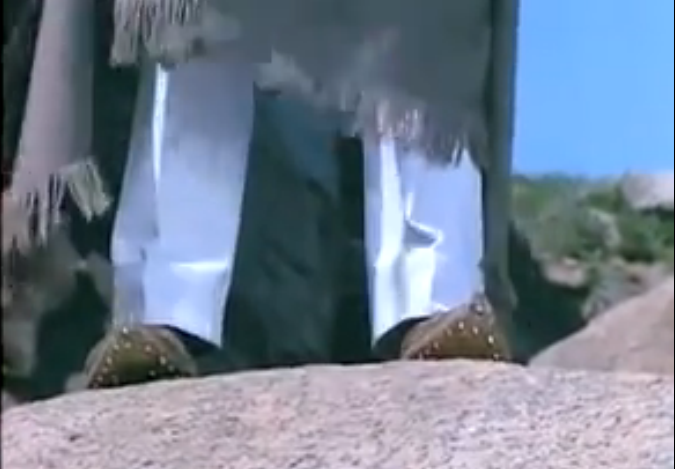
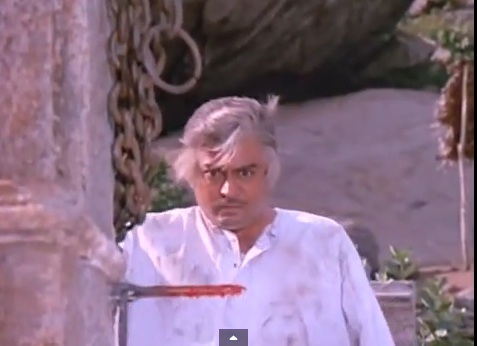
Sholay was released just six or seven weeks 'a state of emergency' was declared on India. This included, for the first and last time in the history of independent India, press censorship. A squeaky clean family film like Sholay ought to have had nothing to worry about from the pre-June 1975 film censors of India.
However, the Emergency censors decided that even violence of the kind normal in Disney cowboy films was too much for India's gentle audiences. No film could have more than six minutes of violence and no 'violent' sequence could last more than a minute. Fisticuffs had, in the early 1970s,been the mainstay of India's commercial films, in Hindi-Urdu as well as Tamil and Telugu. Because of the Emergency, most commercial filmmakers opted for scripts that had a quota of six one-minute sequences per film-more was out of question because of the censors, and less was not acceptable to mass audiences. Some films (e.g. Khoon Pasina) want to show more action than that. So,they awarded themselves additional action scenes in which the two antagonists (normally the hero and the villain) chased each other, lunged towards each other, wielded lathis (long batons) but did not actually touch each other in sequences that exceeded the six-minute quota.
By the time Sholay was released the six-minute quota had not been imposed. But the censors deleted three sequences, the last of which was critical to the story. In it the Thakur, whose arms had been chopped off by Gabbar, the villain, decides to kill Gabbar with his feet--with little metal spikes studded on the soles of his shoes.The spiked-shoe climax, 7.11 minutes The censors got this sequence replaced by one in which the police arrives in the proverbial 'nick of time' and takes Gabbar into custody.
Because this sequence was deleted, a shorter sequence in which a village cobbler studs the Thakur's shoes with metal spikes, became meaningless. The film's makers deleted it on their own.
A third sequence that shows how Gabbar kills young Ahmed (Sachin), too, was chopped off by the censors.Ahmed’s murder: 2.48 minutes
Since the early years of the 2st century, unauthorised DVDs crafted by Indians living in the West have been available in which the sixteen deleted minutes have been added where Salim-Javed and Ramesh Sippy had intended them to be. Most of those 16 minutes are also available on YouTube.
In 2014, a 3D version of Sholay was released with the previously deleted 16 minutes. Sholay 3D (2014)
Crew
Director: Ramesh Sippy
Writers: Salim-Javed (Salim Khan, Javed Akhtar)
Produced by G.P. Sippy
Director of photography: Dwarka Divecha ...
Sound re-recording: Mangesh Desai ...
Film Editor: M.S. Shinde
Production Company: United Producers, Sippy Films
Cast
Dharmendra: Veeru
Sanjeev Kumar: Thakur Baldev Singh
Hema Malini : Basanti
Amitabh Bachchan : Jai
Jaya Bhaduri: Radha
Amjad Khan : Gabbar Singh
A.K. Hangal : Imam Saheb
Satyen Kappu : Ramlal
Iftekhar : Narmala ji (Radha's father)
Leela Mishra : Mausi
Vikas Anand: Jailor
Mac Mohan: Saamba
Keshto Mukherjee: Hariram
SachinV Ahmed
Master Alankar Joshi: Deepak
Viju Khote: Kaalia
Major Anand and Bihari: The two dacoits whom Gabbar kills because they were funks (jo dar gaya)
Asrani: The 'British-era Jailor'
Gita Siddharth: Deepak's mother
Helen: ‘Mehbooba,’ the gypsy dancer
P. Jairaj: Police chief
Jagdeep: Soorma Bhopali
Jalal Agha: The one who sings ‘Mahbooba’
Om Shivpuri: Inspector Saheb
Sharad Kumar: Ninni
Technical Specifications
Runtime: 188 min/3:08 hrs (version released in 1975); 204 minutes/ 3:24 hours (3D version released in 2014).
Sound Mix: 6-Track stereophonic (on 70 mm prints)| Mono (on 35 mm prints)|
Color: EastmanColor
Aspect Ratio: 1.37 : 1 (original negative) / 2.20 : 1 (70 mm prints)
Country: India
Language: Hindi
Release Date: 15 August 1975 (India)
Outdoor shooting at: ‘Sippyvaram’/ Ramnagram village on the Mysore-Bangalore highway, Karnataka, India
Songs
All lyrics by Anand Bakshi
All music credited to Rahul Dev Burman, including a song not composed by him.
Holi Ke Din Sung byKishore Kumar & Lata Mangeshkar
Jab Tak Hain Jaan Sung byLata Mangeshkar
Koi Haseena Sung byKishore Kumar
Mehbooba O Mehbooba Sung byRahul Dev Burman (based on Demis Roussos’ Say you love me)
Sholay Title Theme
Yeh Dosti (happy version) sung by Kishore Kumar & Manna Dey
Yeh Dosti (Sad Version) Sung by Kishore Kumar
"Chaand Sa Koi Chehra": the song not used in Sholay
In addition, a qawwali, "Chaand Sa Koi Chehra," had been recorded for the film (and sung by Kishore Kumar, Manna Dey, Bhupendra Singh and, above all, lyricist Anand Bakshi) but never used. In the film it was supposed to be sung by Jai, Veeru and fellow inmates during their stint in jail. The song was never shot because it would have added to the already considerable length of the film, director Ramesh Sippy told an online channel. G9 Premiers, on which you can hear roughly 40 seconds, from 2.00 to 2.40. You can hear 5:49 minutes (i.e. almost the entire song) juxtaposed quite cleverly on a 'fake' video [1]. The lip--synching is nowhere near perfect, but still quite good. The 'fake' video is a qawwali filmed on Dharmendra and Amitabh Bachchan in the 1977 film Charandas.
Plagiarism— to but also from
i) That the song Mehbooba, O Mehbooba used Demis Roussos’ Say You Love Me as its starting point is beyond debate. However, RD’s is an energetic, masculine, fully-fleshed out version of Roussos’ tentative, almost timid original, and has a lustier, more confident instrumentation to boot. Still, a copy is a copy. The YouTube link [2] neatly superimposes the Say You Love Me track on the Gabbar (Amjad)-Jalal Agha-Helen video.
ii) Many critics tell us that Sholay’s basic premise (hired guns wind up doing a great and even selfless and noble job) was taken from The Magnificent Seven. The same critics always hasten to add that the latter, in turn, ‘had been inspired by Akira Kurosawa’s Seven Samurai. ’ The fact is that Sholay’s basic premise is not ‘hired gun’ as much as ‘hired former convict,’ a genre popularised by The Dirty Dozen. However, belonging to a genre is not the same as plagiarism. Therefore, this argument is ill-founded.
iii) Veeru’s drunken histrionics atop a water tank were a brilliantly Indianised version of an almost identically shot sequence in Stanley Kramer’s The Secret of Santa Vittoria (1969) Full movie/ Relevant excerpt. The sequence was, without doubt, inspired but it was not plagiarised—because the ‘why do the Englsih commit suicide?’ and ‘Aunty jail going, aunty chakki peesing’ dialogues were classic Salim-Javed originals.
iv) It is the mausi sequence that merits a doctoral dissertation—and one that leaps across five continents, six of the proverbial seven seas and several decades, if not more. That Salim-Javed did NOT write this scene is also beyond debate. The mystery is about the source from which they stole the scene.
Deepak Mahaan informs us in The Hindu that Kalidas’ Half Ticket (1962) had ‘a scene plagiarised by Salim-Javed for “Sholay” wherein Amitabh pitches for his friend's matrimony with “Mausi” (Leela Mishra) with [the] same absurd logic.’
However, Vivek Kaul points out in FirstPost that 'The entire Veeru ki Shaadi scene is copied from’ Khaufnak Imarat (The House of Fear/ Urdu/ 1955) written by the great Ibn-e-Safi.
People who grew up in West Punjab before 1947 and who had certainly not seen Half Ticket (and are unlikely to have read Khaufnak Imarat ) knew a story with specious arguments similar to Jai’s, in which he pretends to exculpate his alcoholic friend Veeru. Could the mausi story, then, be part of traditional North Indian folklore? Or did it enter the folklore of the Punjab because of Khaufnak Imarat ?
The question is: how did this scene find its way into writer-director Oliver Stone’s Salvador (1986/ UK/ USA)? That Mr Stone is not the real author of this scene is equally beyond debate. By the time he started making his film Sholay had been screened in theatres in the USA and UK. The author of this article saw Sholay on British television in 1987, and that did not seem to have been its UK TV premiere. Did Mr Stone pick that sequence up from Sholay and westernised (Hispanicised, actually) it somewhat? Or were that set of seemingly friendly arguments part of Salvadorean folklore, too, just as they were part of Punjabi folklore? In that case, did the story travel from India to El Salvador, or did identical funny arguments pop up in the human brain across continents?
See also
The page 70mm films in India/ South Asia, among other things, has two photographs that show how Sholay was blown up from 35mm to 70mm.
